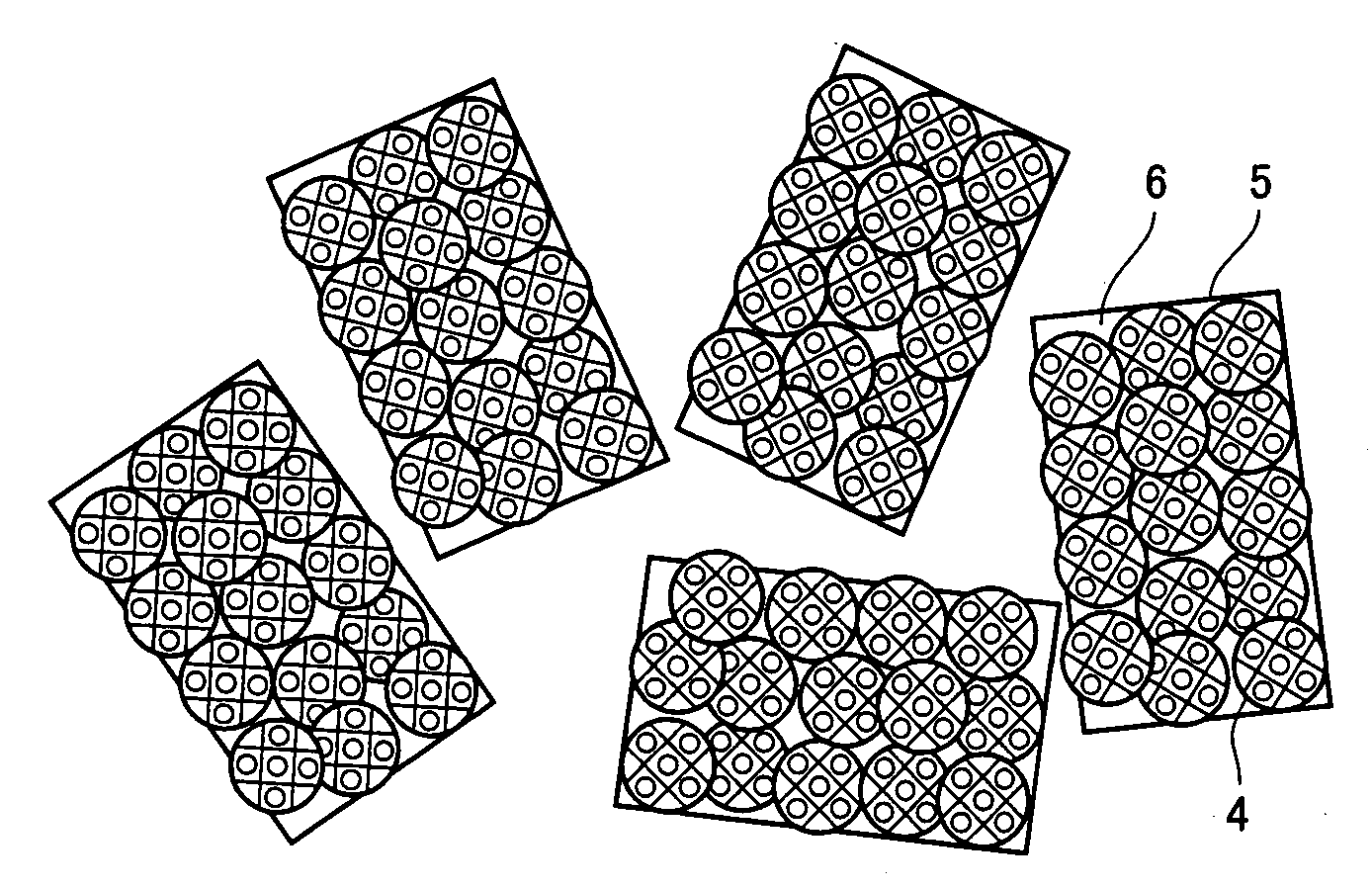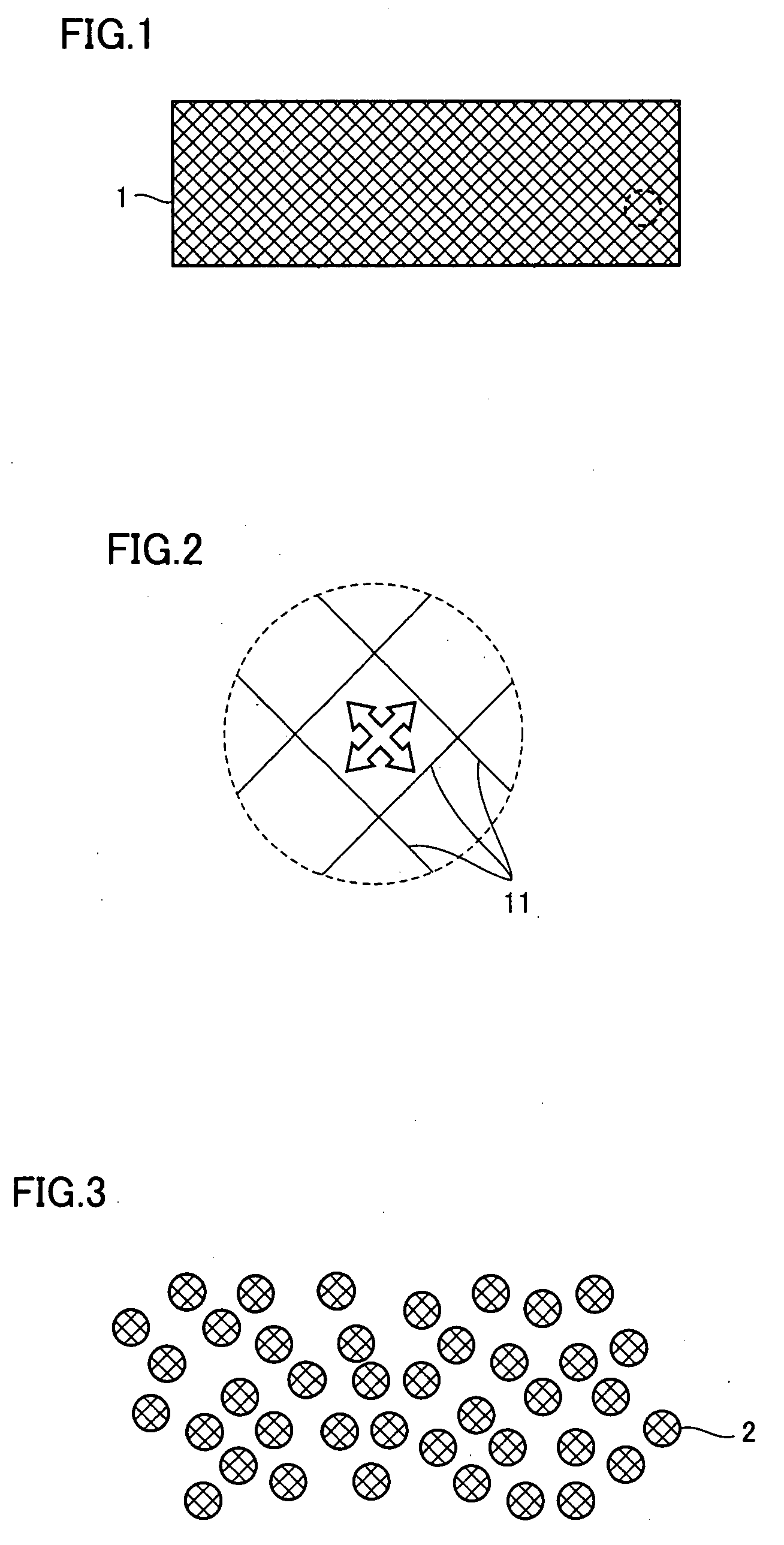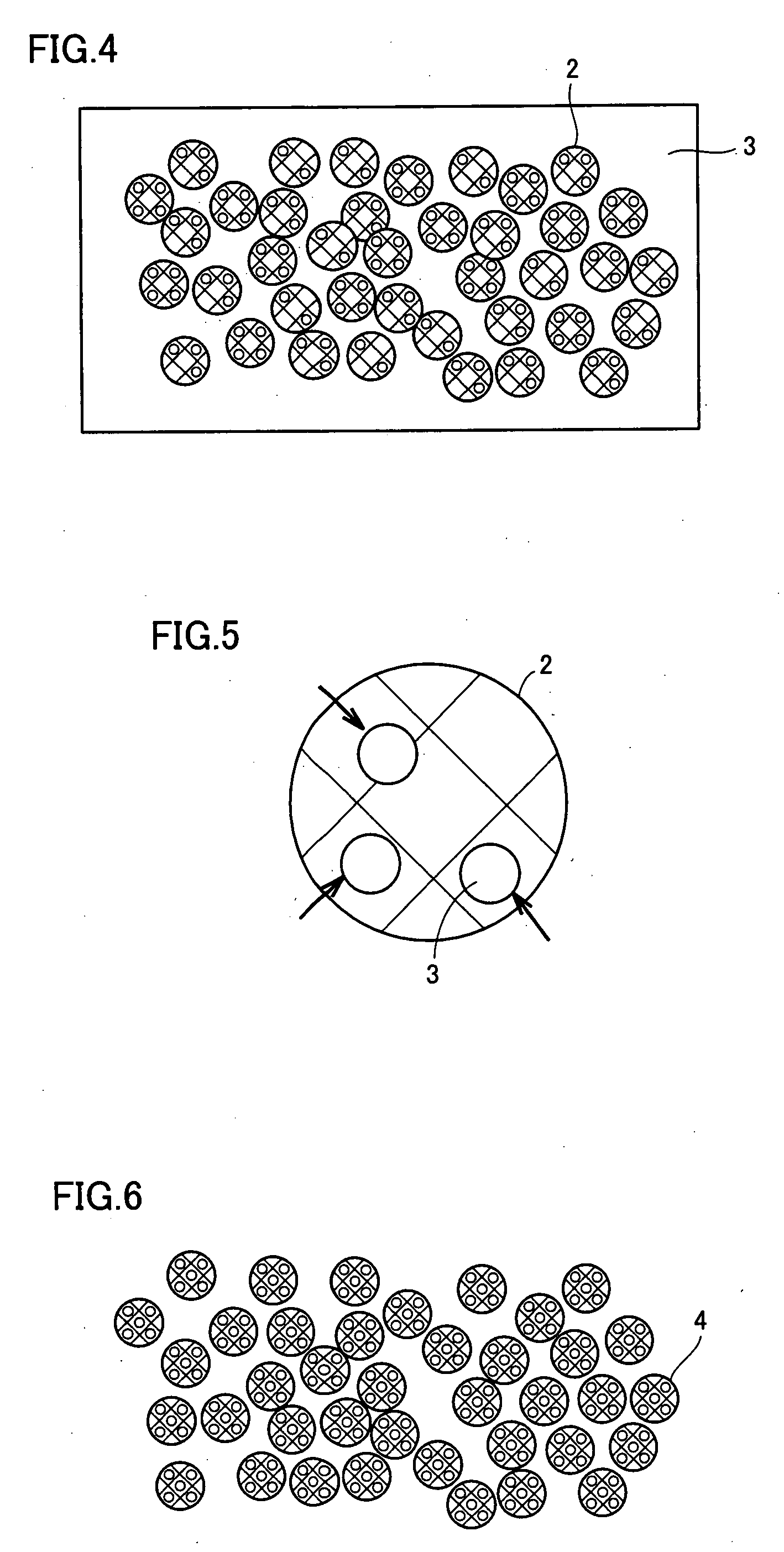Molding material, molded part, and method for manufacturing them
a molding material and molded part technology, applied in the direction of manufacturing tools, surface layering apparatus, raw material division, etc., can solve the problems of low breaking strength, poor absorption of deformation and impact, and resins that do not have both flexibility and strength, and achieve excellent affinity, mixing property, and dispersibility.
- Summary
- Abstract
- Description
- Claims
- Application Information
AI Technical Summary
Benefits of technology
Problems solved by technology
Method used
Image
Examples
first embodiment
[0178]Each of the embodiments according to the present invention will be described below. A method for manufacturing a molding material composed of the biodegradable resin cross-linking product powder, according to the first embodiment will be described.
[0179]In the first embodiment, a kneaded product of a biodegradable resin component and a cross-linkable monomer is prepared in a step (A). The biodegradable resin component is softened by heating, or the biodegradable resin component is dissolved or dispersed into a solvent capable of dissolving the biodegradable resin component. A biodegradable resin component, in which a cross-linking structure can be introduced, is used as the biodegradable resin component. In the present embodiment, cellulose acetate (CDA), which is a polysaccharide-based biodegradable resin, L-form or D-form polylactic acid, which is an aliphatic polyester-based biodegradable resin, polycaprolactone (PCL), polybutylene succinate (PBS), and polybutylene adipate ...
second embodiment
[0188]A method for manufacturing a molding material composed of the biodegradable resin cross-linking product powder, according to the second embodiment will be described.
[0189]In the second embodiment, the order of the step (B) and the step (C) in the first embodiment is exchanged. That is, the pellet-shaped kneaded product produced in the step (A) is ground in advance (step (C)), the ionizing radiation is applied to cross-link under the same condition as in the first embodiment (step (B)) and, thereby, a biodegradable resin cross-linking product powder is produced.
[0190]Other configurations, operations and effects are similar to those in the first embodiment. Therefore, the explanation thereof are not repeated.
third embodiment
[0191]A method for manufacturing a molding material composed of the biodegradable resin composite powder, according to the third embodiment will be described.
[0192]The manufacturing method in the third embodiment includes a step (step D) of immersing the biodegradable resin cross-linking product powder of the first embodiment or the second embodiment produced through the steps (A) to (C) into a impregnant containing a plasticizer.
[0193]In the present embodiment, a plasticizer containing an aliphatic polyester derivative or a rosin derivative, a plasticizer containing a dicarboxylic acid derivative, and a plasticizer containing a glycerin derivative is used as the plasticizer. In particular, the plasticizer containing a glycerin derivative is used favorably.
[0194]In the present embodiment, the biodegradable resin cross-linking product powder and the impregnant are uniformly mixed at a desired ratio in a hermetically sealed container. Heating is carried out for 30 minutes to 120 minut...
PUM
| Property | Measurement | Unit |
|---|---|---|
| Temperature | aaaaa | aaaaa |
| Temperature | aaaaa | aaaaa |
| Temperature | aaaaa | aaaaa |
Abstract
Description
Claims
Application Information
 Login to View More
Login to View More - R&D
- Intellectual Property
- Life Sciences
- Materials
- Tech Scout
- Unparalleled Data Quality
- Higher Quality Content
- 60% Fewer Hallucinations
Browse by: Latest US Patents, China's latest patents, Technical Efficacy Thesaurus, Application Domain, Technology Topic, Popular Technical Reports.
© 2025 PatSnap. All rights reserved.Legal|Privacy policy|Modern Slavery Act Transparency Statement|Sitemap|About US| Contact US: help@patsnap.com



